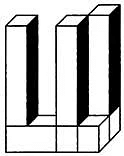All Exams >
Class 8 >
Science Olympiad Class 8 >
All Questions
All questions of Cubes and Dice for Class 8 Exam
Chapter doubts & questions for Cubes and Dice - Science Olympiad Class 8 2025 is part of Class 8 exam preparation. The chapters have been prepared according to the Class 8 exam syllabus. The Chapter doubts & questions, notes, tests & MCQs are made for Class 8 2025 Exam. Find important definitions, questions, notes, meanings, examples, exercises, MCQs and online tests here.
Chapter doubts & questions of Cubes and Dice - Science Olympiad Class 8 in English & Hindi are available as part of Class 8 exam.
Download more important topics, notes, lectures and mock test series for Class 8 Exam by signing up for free.
Science Olympiad Class 8
70 videos|132 docs|67 tests
|














